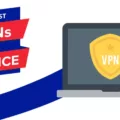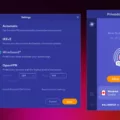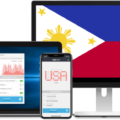Port forwarding is an essential tool for modern internet users, allowing them to access restricted services and websites even when behind a VPN. But while most VPNs offer privacy and security, they often disable port forwarding by default. Fortunately, there are some VPNs that support port forwarding, which can give you the best of both worlds: the privacy of a VPN and access to restricted websites and services.
So what is port forwarding? In essence, it’s a way for a computer to connect to another device on the internet. The computer initiates the connection, sends a request to the other device, and then receives back a response from it. By using port forwarding with your VPN, you can open up certain ports on your router and let them be used by applications or services that require them.
The good news is that some VPNs have built-in port forwarding capabilities, so you don’t have to manually configure each one. Private Internet Access (PIA) is one such provider that offers this feature on its compatible devices like Android, Mac, Windows, iOS, and Linux. To enable port forwarding through PIA’s app or account dashboard is easy; simply specify which ports you want to open on the VPN and then change the listening port in your program or service settings accordingly. Additionally, it’s important to disable UPnP and NAT-PMP in your program settings so as not to interfere with any existing network configuration.
Port forwarding can be a great way to get around censorship or geo-restrictions without sacrificing your privacy or security. However, it’s important to remember that while using port forwarding with your VPN will increase your chances of success when accessing restricted content online, it may also introduce new risks if not used properly. Be sure to research any potential legal implications before attempting this solution.
Does a VPN Impact Port Forwarding?
No, a VPN does not mess up port forwarding. Port forwarding is a way to allow remote access to the devices connected behind the firewall or router. When using a VPN, your connection is encrypted and your traffic is sent through secure tunnels. This will block any incoming or outgoing ports by default, preventing port forwarding. However, it is possible to keep those ports open by using a VPN with port forwarding enabled. With port forwarding enabled, you can specify which ports should remain open for remote connection, while the rest of the ports will remain blocked for security reasons.

Source: top10vpn.com
Setting Up a VPN Port Forwarding
Setting up a VPN port forwarding is a straightforward process. First, you need to enable port forwarding in the VPN app or VPN account dashboard. You can specify which ports you want to open on the VPN. Next, open a program that’s using port forwarding, such as a torrent client. Change the listening port to match the same number as in the previous step. Finally, disable UPnP and NAT-PMP in the program settings. Once these steps have been completed, your VPN port forwarding setup should be complete and ready for use!
Which VPNs Support Port Forwarding?
Port forwarding is a feature that allows you to open up port numbers on your router or firewall and direct traffic between different devices on your network. To do this, you’ll need a VPN service that supports port forwarding. Fortunately, there are many providers who offer this feature, such as Private Internet Access (PIA).
PIA offers a secure connection with port forwarding support on compatible devices like Android, Mac, Windows, iOS, and Linux. When you enable the feature through PIA, you’ll be presented with a list of servers that offer port forwarding. This makes it easy to access your device from outside the network. Other VPN services that support port forwarding include NordVPN, Surfshark, IPVanish, and ExpressVPN.
Conclusion
In conclusion, port forwarding is a useful feature when using a VPN. It allows you to keep certain ports open for remote connections and can help improve your online security and privacy. Private Internet Access offers port forwarding support, making it easy to set up on compatible devices like Android, Mac, Windows, iOS, and Linux. By following the simple steps provided above, you’ll be able to configure your VPN with port forwarding and start enjoying the additional protection it provides.








